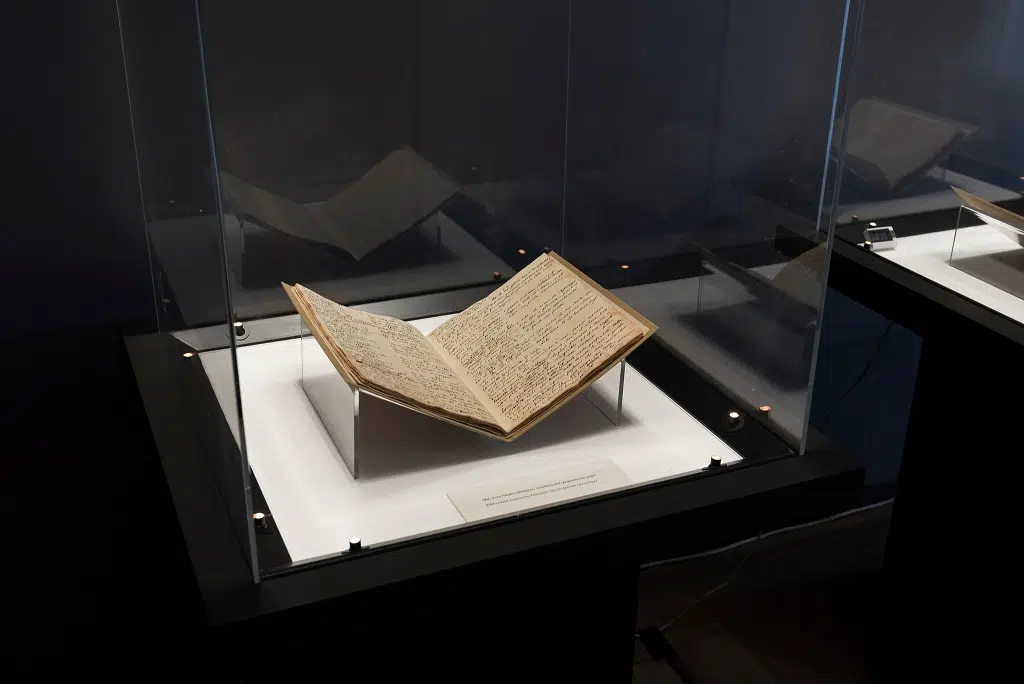
Conserved manuscripts from Greek national poet Dionysios Solomos are exhibited at the Byzantine and Christian Museum in Athens until the end of April, on the occasion of the Greek Independence Day celebrated on March 25.
The rare exhibits were unveiled to the public on March 21, following the completion of conservation work 200 years since Solomos wrote his Hymn to Liberty, which eventually became the national anthem of Greece in 1865.
Solomos’ manuscripts undergo conservation
Visitors to the Byzantine and Christian Museum in Athens will have the opportunity to see the 200-year-old manuscripts alongside an informative video about their conservation project until the end of April.
Educational programs will run over the same period at the museum.

Beyond the Athens show, the poet’s manuscripts form part of the permanent exhibition at the Museum of Dionysios Solomos and Other Eminent People of Zakynthos, his home island.
Besides the manuscripts, visitors of the small museum, located at St Mark’s square in Zakynthos town, can view a selection of Solomos’ personal belongings, such as his desk, inkwell and favorite books, and a portrait gallery picturing the Solomos family.
The ground floor of the museum houses the only Mausoleum in Greece, where the bones of Dionysios Solomos and those of poet Andreas Kalvos and his wife are laid to rest.
Creation of the Greek national anthem
Dionysios Solomos was born at the turn of the 19th century, in 1798, and his work became a monumental influence in uniting Greeks and creating a common national identity following the 1821 War of Independence and the establishment of a free state.
His Hymn to Liberty, written in 1823, consists of 158 stanzas, and combines elements of romanticism and classicism, inspired by the brave men who fought in the Greek War of Independence and Greece’s long history.
It presents the goddess of liberty and recalls the past martyrdoms that occurred during the history of the country, the revolt of its “slaves” under foreign rule, as well as the joys of being a Hellene.
The Corfiot musician Nicolaos Mantzaros composed a melody for the words in 1828, which he kept modifying in 1837, 1839 and 1840, and December 1844 – before he eventually presented it to King Otto I, the ruler of the newly founded Greek state.
The King, who heard the poem’s first three stanzas set to the music by the local philarmonic band during a visit to Corfu, was so impressed that he ordered it to be played during official events; thus, “Hymn to Liberty” instantly became the National Anthem of Greece.
See all the latest news from Greece and the world at Greekreporter.com. Contact our newsroom to report an update or send your story, photos and videos. Follow GR on Google News and subscribe here to our daily email!



